|
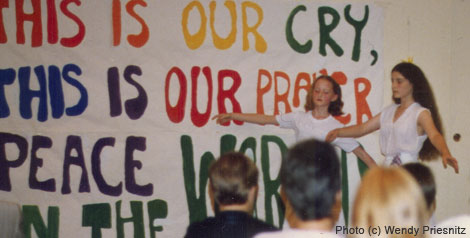
Acting For Peace
By Wendy Priesnitz
My daughters Heidi and Melanie (who were unschooled in the 1970s and '80s) were always involved in the community activism that was part of our life. From the time they were born, they attended organizing meetings with us, accompanied us when we worked our shifts at the food co-op, and even occasionally participated – in a carrier or stroller, or holding my hands and later signs – in peace marches. They loved creating flyers for those events using rubber stamps and paint.
When they were three and four years old, their dad and I launched our publishing business. Soon, they had their own double-page spread in our first magazine, Natural Life. Heidi's and Melanie's Page published other kids' artwork and stories, and also included bits of environmental information, simple natural foods recipes, and addresses for environmental groups and projects for children. This was followed, a few years later, by their own newsletters, which they used to share information about various causes with subscribers around the world.
As the girls grew older, they joined groups on their own, participated in letter writing campaigns about peace and environmental issues, and eventually undertook their own activist activities. The projects were always their ideas, and focused on issues they were passionate about. Their projects played a huge part in their learning – both academic and otherwise.
When Heidi was thirteen, she decided to produce a theatrical performance about the anniversary of the bombings of Hiroshima and Nagasaki. She and her sister had been hugely influenced by the book Sadako and the Thousand Paper Cranes. It is the story of Sadako Sasaki, a Japanese girl who was two years old when the atomic bomb was dropped on August 6, 1945, near her home in Hiroshima, Japan. When she was ill with leukemia, a friend brought her an origami crane, and related the ancient Japanese story that promises that anyone who folds a thousand origami cranes will be granted a wish. According to the book, she died, at age twelve, after having folded over six hundred cranes; her friends folded the balance, all of which were buried with her.
So our daughters gathered together a group of friends (mostly schooled), turned the premise of the book into a play (with embellishments and a strong peace message), and spent a few months workshopping it. Heidi persuaded the local librarian to let them use a room at the library and wrote press releases, while they all made banners and leaflets.
On the evening of the presentation, the library was overflowing. The kids and their play were featured in both local and national media. The whole experience was empowering and educational for everyone involved.
Learn More
Read other articles about unschoolers and community engagement
Copyright © Life Media
Privacy Policy
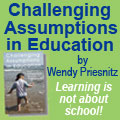 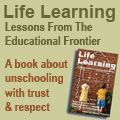 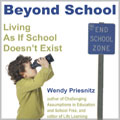
  
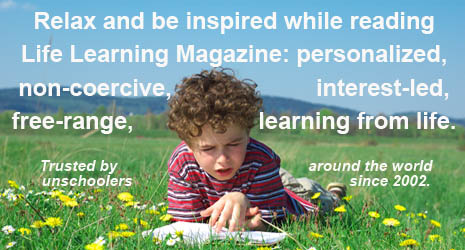
|

